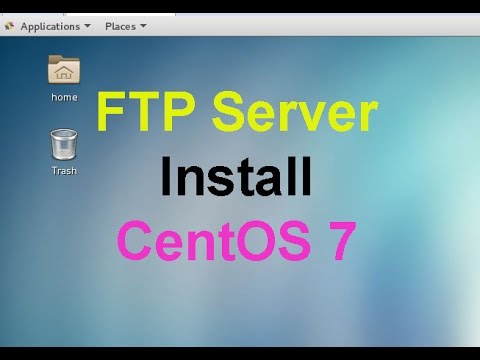

Last metadata expiration check: 0:45:11 ago on Sun 01:35:13 PM UTC.
#Rhel ftp install#
To set up your FTP server to handle your rep, first install vsftpd: # yum install vsftpd I'll walk you through installing and configuring vsftpd to serve your repo. If you want to suppress or prevent this message while running the dnf or yum command then edit the file /etc/yum/pluginconf.d/nf: # vim /etc/yum/pluginconf.d/nfĪnd change the parameter enabled=1 to enabled=0: Īs I mentioned before, this article covers setting up your own repository using an FTP server (in this case, vsftpd). You can use subscription-manager to register. If you read the above command output carefully, you are getting the warning message, This system is not registered to Red Hat Subscription Management. You can see that the local repository generated files, so everything is ok at this point. Verify that the local repository was created: # ls /local_repo/repodata/Ģ2ĥĦĪ2Ĭ2Į In this step, you clean up the temporary repository files and verify that the local repository is enabled: # yum clean all Step 5: Test and verify your local repository Temporary output repo path: /local_repo/.repodata/ Last metadata expiration check: 0:02:33 ago on Sat 09:52:46 PM UTC. LocalRepo_AppStream LocalRepo_AppStream 4,672 LocalRepo_AppStream 94 MB/s | 5.3 MB 00:00 This system is not registered to Red Hat Subscription Management. Updating Subscription Management repositories. Install the required packages for creating, configuring and managing the local repository: # yum repolist Gpgkey=file:///etc/pki/rpm-gpg/RPM-GPG-KEY-redhat-release Step 4: Configure the local YUM/DNF repositoryĮdit the repo configuration file you created earlier: # vim /etc//local-dvdrom.repo 1 root root 5134 RPM-GPG-KEY-redhat-release Wait until the files are copied, then verify the files were copied using: # ls -l /local_repo/
#Rhel ftp iso#
Step 3: Copy media content to the local directoryĬopy the ISO files locally under the /local_repo directory: # cd /mnt # chmod u+rw,g+r,o+r /etc//local-dvdrom.repo Use this directory with vsftpd for serving files over the LAN.Ĭreate the new local repository’s configuration file local-dvdrom.repo under the /etc/ directory: # touch /etc//local-dvdrom.repo Next, create a directory for the repo: # mkdir /local_repo Move the existing repo files located in /etc/: $ sudo mv /etc//*.repo /tmp/įrom this point, it is better if you continue as the root user. Step 2: Create a local YUM repository from the mounted media Or mount the ISO image: $ sudo mount -o loop rhel-8.0-x86_64-dvd.iso /mnt Mount: /mnt: WARNING: device write-protected, mounted read-only. Use the installation DVD: $ sudo mount /dev/cdrom /mnt Step 1: Mount the Red Hat Enterprise Linux 8 mediaįirst, mount the local media (the DVD, USB stick, etc.) that contains Red Hat Enterprise Linux 8. Local Repository Server: RHEL 8 Ĭreating your repository involves a number of steps. You will need to set up two machines with Red Hat Enterprise Linux 8 systems, one local repo server, and one client machine that will use the local repository from the local server. For Apache web server instructions, see Create your own Apache-based YUM/DNF repository on Red Hat Enterprise Linux 8.
#Rhel ftp how to#
I will also show you how to find and install software packages on client RHEL 8 machines using the Very Secure FTP Daemon ( vsftpd) server. In this article, I will explain how to set up a local YUM/DNF repository on Red Hat Enterprise Linux (RHEL) 8 using the installation DVD or ISO file.
#Rhel ftp update#
With YUM or DNF, you can install and update groups of computers without having to manually update each one using RPM.

Yellowdog Updater, Modified (YUM) or Dandified YUM (DNF) are software package managers that manage the RPM-based Linux distributions. Since the packages are downloaded via a local network, the updates perform quickly.

#Rhel ftp download#
Another benefit is, of course, the download speed. How well do you know Linux? Take a quiz and get a badge.Linux system administration skills assessment.A guide to installing applications on Linux.Download RHEL 9 at no charge through the Red Hat Developer program.


 0 kommentar(er)
0 kommentar(er)
